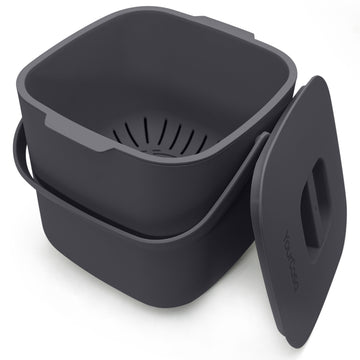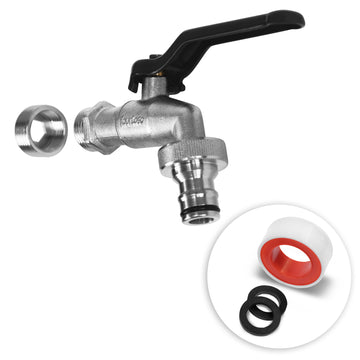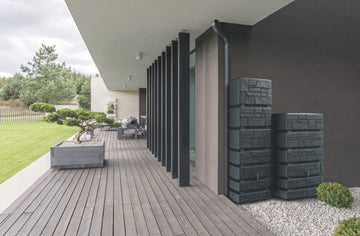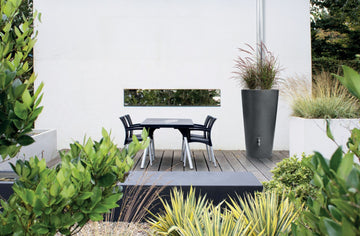
Since ancient times, people have been collecting water to use for irrigation or consumption. Nowadays, it is very easy to simply buy water or get it from the tap - but hardly anyone thinks about the negative consequences such as the ecological costs of transport or packaging.
That's why using a rain collector still makes sense today. Such a component in your rainwater collection system not only helps to relieve the burden on the city's sewage system and the entire environment the next time it rains, but it also saves you money.
How does a rain collector work? A rain collector is connected to a downpipe to collect rainwater from your roof. A filter system removes leaves and debris before the water is directed into a rain barrel. This collected water is then available for garden irrigation, car washing or other outdoor applications. The rain collector thus enables efficient use of rainwater and contributes to water conservation.
In this article, you will learn what exactly a rain collector is, what you need to pay attention to during installation and maintenance, and what advantages such a system offers you .
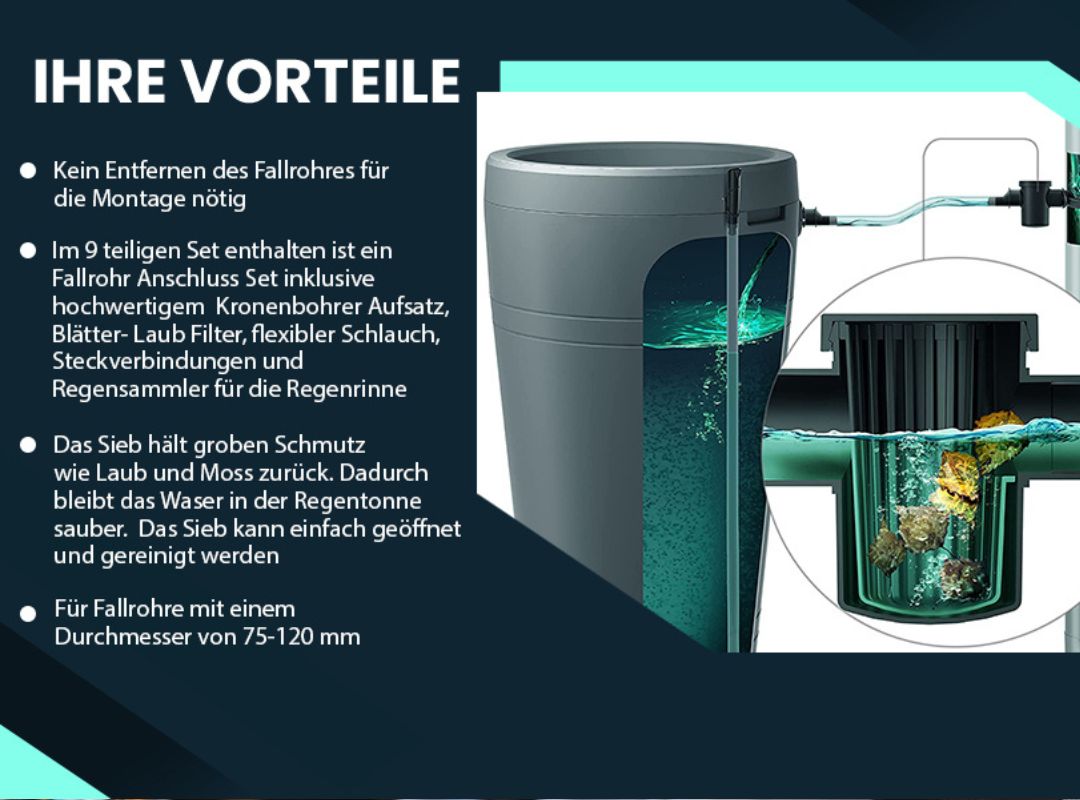
What types of rain collectors are there?
A rain collector is not really that complicated . Simply put, it is a component that you install in a downpipe to effectively separate clean rainwater from annoying contaminants such as leaves and the like.
There are basically two common variants : a rain collector with a downpipe sieve and one with a downpipe filter. Downpipe sieves are easy to install and efficiently filter leaves and coarse dirt directly at the downpipe before the water flows into the collecting container. They are usually made of metal mesh that reliably holds back dirt and only allows rainwater to pass through. The problem is that the stainless steel sieve has to be cleaned regularly and should therefore be placed in an easily accessible place. It can also quickly become clogged.
Downpipe filters, on the other hand, are a little more well thought out . They separate the rainwater into two parts before filtering: heavily contaminated water on the one hand, and relatively clean water on the other. They make use of physics to do this. Water "sticks" to the inside of the downpipe, so to speak, while leaves and other coarse dirt fall down the middle of the pipe. The heavily contaminated water is directed directly into the sewer, while the relatively clean, filtered water is directed through another filter into the rain barrel. This ensures that downpipe filters require less maintenance and do not clog as easily.
Here is an overview of the different types of rain collectors along with their advantages and disadvantages:
| Type of rain collector | Advantages | Disadvantages | Useful for |
| Downpipe strainer | Easy to install, effective filtration of leaves and coarse dirt, cost-effective | Must be cleaned regularly, can easily become clogged, manual removal of dirt necessary | Households with little rainwater use looking for a cost-effective solution |
| Downpipe filter | Efficient separation of dirty and clean water, less maintenance required, lower risk of clogging | More expensive to purchase, more complex installation | Households that prefer a more efficient and low-maintenance solution, especially in areas with high leaf volumes |
The components of a rain collector
A typical rain collection system consists of several components : the downpipe filter, which is used to remove leaves and coarse dirt; the overflow protection , which prevents the rain barrel from overflowing and safely drains excess water; and the connection options for rain barrels, which store the collected water. Some systems also have accessories such as water distributors, which enable the water to be evenly distributed to different storage locations or consumption points. Shut-off valves are also installed in some models. With their help, you can easily switch between summer and winter operation.
Installation and maintenance
Depending on the type, installing and maintaining a rain collector is not that difficult. In our step-by-step instructions , you can read how to install a simple rain collector yourself - both in an existing downpipe and in a new one. Here we go:
- In an already installed downpipe:
- Step 1: Choose the installation height (ideally a few centimeters below the top edge of the rain barrel).
- Step 2: Mark the cut point on the downpipe.
- Step 3: Cut the downpipe at the marked point. For some models, you only need to cut a hole in the downpipe and insert a rubber lip
- Step 4: Install the rain collector between the separated downpipe sections.
- Step 5: Secure the rain collector with the included fasteners.
- In a new downpipe:
- Step 1: Determine the position of the rain collector before installing the downpipe.
- Step 2: Mount the lower part of the downpipe to the desired position of the rain collector.
- Step 3: Install the rain collector and connect it to the upper part of the downpipe.
- Step 4: Complete the downspout installation to the gutter drain.
Maintenance:
- Regular cleaning: Remove leaves and dirt from the filter to avoid clogging.
- Inspection: Check the connections and seals annually for leaks.
- Before winter: Empty the rain barrel and all pipes to prevent damage from frost.
What are the advantages of a rain collector?
Rain collectors offer almost exclusively advantages - both economic and ecological. By collecting rainwater directly from the roof and using it for garden irrigation, cleaning work or other purposes, you can save a lot on water costs - so your bank account will be happy.
In addition, by using a rain collector and the connected rainwater collection system, you conserve groundwater resources because you use less drinking water for things that do not actually require drinking water .
By telling friends and neighbors about the benefits of your rain collector and your rainwater collection system, you can convince even more people of its advantages and thus make a big contribution to protecting the environment.
Here again all the advantages at a glance:
- Reducing water costs by using collected rainwater for garden irrigation and other purposes
- Conservation of groundwater resources as less drinking water is consumed
- Promoting sustainable use of water resources and raising awareness of the importance of water as a precious resource
- Contribution to environmental protection by reducing the flow of rainwater into the sewer system, which can reduce overloads
- Improved water quality in the garden, as rainwater is softer than drinking water and contains fewer chemicals
- Opportunity to become independent from local water utilities in times of drought or water shortage
- Long-term cost savings by reducing dependence on paid drinking water
- Easy integration into existing garden irrigation systems to increase efficiency
How much does a rain collector cost?
Depending on the type and size of your rainwater collection system, the price of your rain collector can vary considerably. You can get simple downpipe strainers for around €20 to €50 - so they are a great entry-level solution at a reasonable price. More complex systems with downpipe filters, which enable a more efficient separation of dirt and water, cost between €100 and €300. There are usually no costs for installation, as you can easily do it yourself and detailed installation instructions are usually included. However, if you prefer to call in a professional, you must expect additional costs of around €100 to €200.
Here is an overview of the costs:
| Type of rain collector | Price range |
| Downpipe strainer | 20 - 50 € |
| Downpipe filter | 100 - 300 € |
| Installation by a specialist | 100 - 200 € |
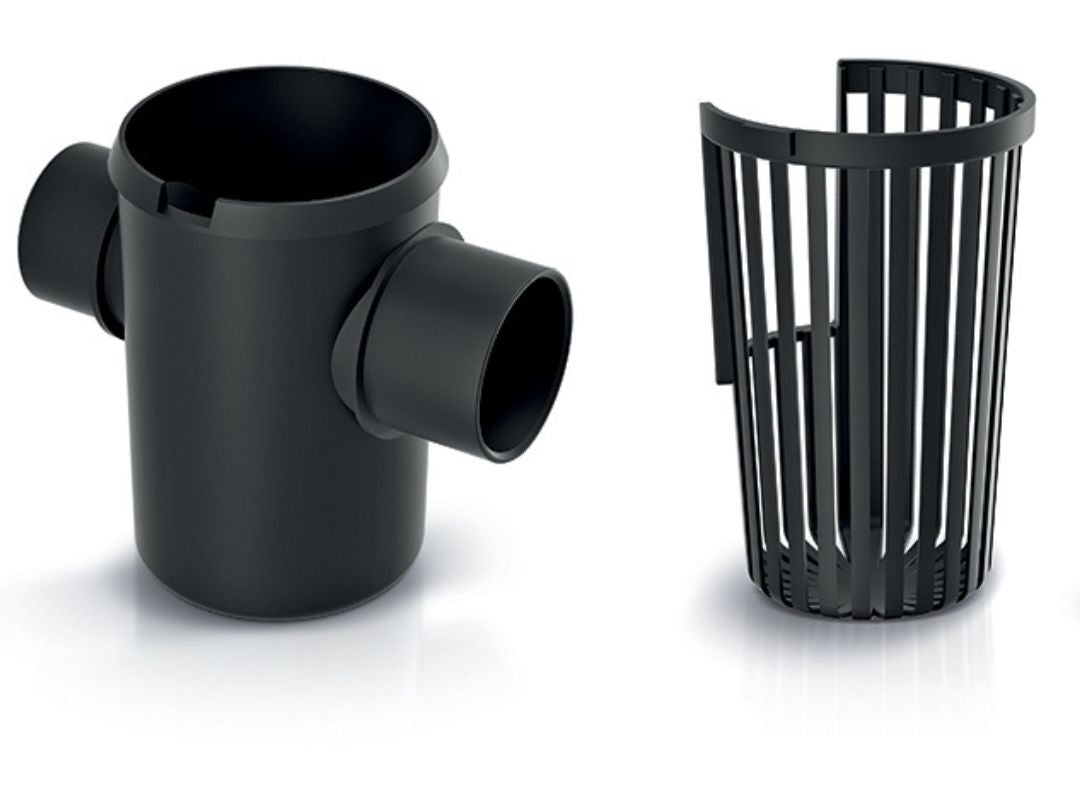
Conclusion: Is a rain collector worth it for your garden?
Installing a rain collector and using rainwater efficiently in your garden is definitely worth it . A good rain collector is a useful addition to your rainwater collection system, as it keeps dirt out of your rain barrel and reduces the amount of cleaning required.
We probably don't need to explain the general advantages of a rainwater collection system to you again - but we'll do it briefly anyway: You protect the environment by saving drinking water, you save money by reducing your water consumption and, in the best case, you also make friends and relatives a little more environmentally conscious.
Given the ease of installation and maintenance , especially if you decide to do it yourself, the total cost of a rain collector remains manageable. If you consider the long-term benefits, there is actually no reason to reconsider the purchase.
At YourCasa you will find various designs of rain collectors, one of which is sure to suit your needs.

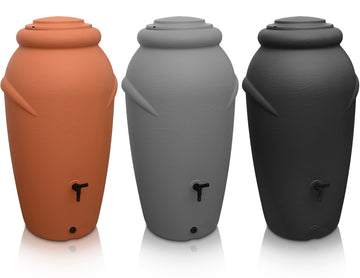
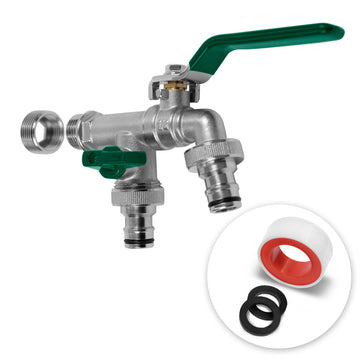
![Drei hohe YourCasa Regentonne 240 Liter [Wellen-Design] - Frostsicher & UV-beständige Gartentöpfe in den Farben Schwarz, Grau und Terrakotta, jeweils mit Drainagesystem für nachhaltige Bewässerung.](http://yourcasa.de/cdn/shop/files/ohnelogo_b8aeecac-557e-4106-a999-e77dcd160209.jpg?v=1707130230&width=360)
